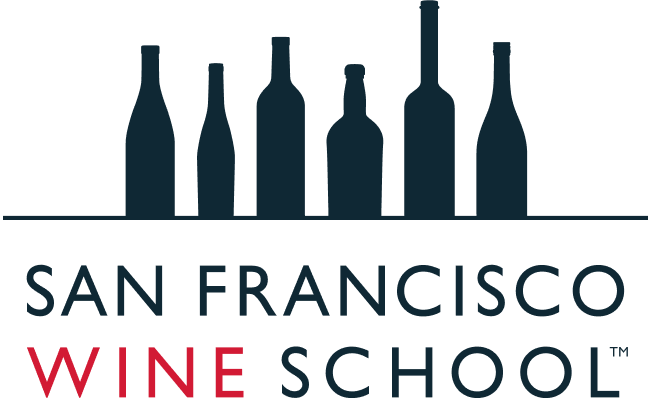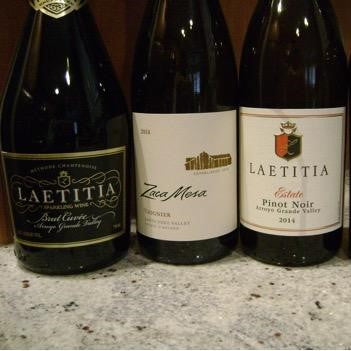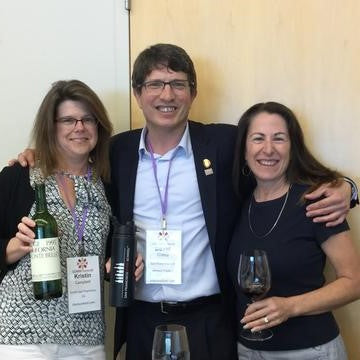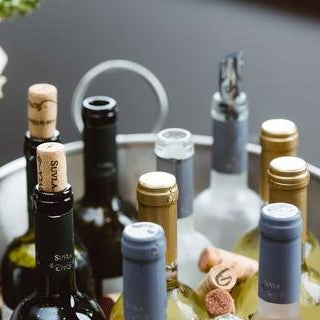by Cynthia Bournellis
I work in the California wine industry, and my terroir is the Santa Cruz Mountains. I love our region; I love our wines. Yet, there’s more to California wine than those of my own backyard. And while I’ve journeyed through California’s many wine regions, I wanted to learn in more detail about each place. That’s why I became a certified California Wine Appellation Specialist with Honors (CWAS, for short)—with the guidance of the San Francisco Wine School.
There’s a “world” of wine, terroir and history out there in our Golden State. California’s wine “industry” dates back to 1769 when Padre Junipero Serra planted the first vitis vinifera vines in California. The fruit from these vines was called the Mission grape. I placed “industry” in quotation marks because these vines were not commercial; those came along in 1833 when Jean-Louis Vignes planted the first commercial vines in San Diego from cuttings he brought over from Bordeaux, France.
The list of these early—and contemporary—pioneers goes on, but the one who I found most amusing was Agostin Haraszthy who in 1857 founded Buena Vista Winery in Sonoma. Often referred to as the “Father of California Viticulture,” because he introduced viticulture to the state, Haraszthy led quite the color life. Born into Hungarian nobility, Haraszthy eventually immigrated to America and later California, where he held such roles as sheriff, assemblyman, U.S. mint worker, writer, viticulturalist, and much later sugar cane farmer in Nicaragua. Legend has it that he was attacked and killed by an alligator while working on his boat there.
California’s wine history is abundant; so is its wine production. As of 2017, more than 90 percent of the wine produced in the United States comes from California. Of the 239 American Viticultural Areas (AVAs) in this country, 138 are in California, and there are 43 AVAs in the state’s 58 counties. Furthermore, California boasts 4,600 wineries (4,200 are bonded) and 5,900 grape growing farms.
Within California’s four winegrowing regions—North Coast, Central Coast, South Coast, and Sierra Foothills—are nestled more than 100 unique AVAs and sub-AVAs where you can find some fantastic gems. Take Ballard Canyon AVA, for instance. Where is Ballard Canyon?” you ask. Well until I took the CWAS program, I’d never even heard of Ballard Canyon, which is in Santa Barbara County and is located in the Santa Ynez AVA—and its specialty is Syrah. Starting with the 2012 and 2013 vintages, Ballard Canyon’s grower-producers package estate-grown Syrahs in a custom mold with the raised words “Ballard Canyon” encircling the bottle shoulder. This strategy is designed to put the wine on par with great Syrah.
And then there’s Rock Pile, an AVA that intrigues me not just for its Zinfandel, but for stories of outlaws such as Jackson Bishop who was connected to Jesse James. Wine and history go hand in hand. This is what I enjoyed about the CWAS program: It delved into California’s wine past. And, it’s just this bit of history that helps put the wine part into perspective. Case in point: Recently departed winemaker Andre Tchelistcheff, who was instrumental in the recovery of California’s wine industry post-Prohibition, is most notable for his efforts in helping define the style of the state’s high-quality wines, especially Napa Valley Cabernet Sauvignon. He also introduced new techniques and procedures such as aging wine in small French Oak barrels, and made contributions to the techniques of cold fermentation, vineyard frost protection, and malolactic fermentation.
The CWAS program, however, entails more than just wine history and industry pioneers. Other topics include wine labeling laws, viticultural practices from conventional to organic to sustainable, terroir, land formations and soils, and which grapes grow best in which regions. Take Chardonnay, for example. Most of you reading this likely know that Chardonnay does well in cooler climates such as Mendocino’s Anderson Valley AVA and the Santa Cruz Mountains AVA. But what about the Sierra Foothills AVA? Not the best place to grow Chardonnay, but it is the primary white grape of this appellation because of consumer demand. How does it taste? Well, we tried one (I won’t mention the label) during the tasting portion of the class and it was quite scary. But, if you want to learn about wine, you have to taste the good with the bad.
Oh and then there’s the maps. If you take the course, you must print out the AVA maps because doing so will come in handy when it comes to visualizing the regions, especially at test time. And, maps are just cool!
These are just some examples of the in-depth knowledge I received from the CWAS program. Did I peak your interest? I hope so. I’d love to share more, but you’ll just have to take the course for yourself. I can, however, share with you some of my favorite wines we tasted from around the Golden State.



